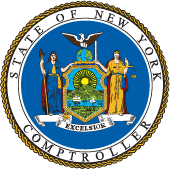The Section 8 Housing Choice Voucher (HCV) program (Assistance Listing Number (ALN) 14.871) was created by the Housing and Community Development Act of 1978 and is administered by the United States Department of Housing and Urban Development (HUD). HUD’s tenant-based HCV program, the agency’s largest, is the federal government’s primary means of providing private-market housing assistance. Vouchers cover a portion of rent, and participants may choose any housing that meets the requirements of the program. Eligibility is based on total annual gross income and family size.
In general, an applicant’s income may not exceed 50 percent of the area’s median family income. In New York City, this includes all of HUD’s NY Metro Fair Market Rent Area, which encompasses the five boroughs as well as Putnam, Rockland and Westchester counties. For 2024, the NY Metro income limit for a family of four was $77,650. Public housing authorities must also provide 75 percent of their vouchers to applicants HUD considers extremely low-income (ELI). For 2024, the NY Metro ELI limit for a family of four was $46,600.
Some HCV funds are paid directly to the City and administered through the Department of Housing Preservation and Development (HPD). Other funds are paid directly to the New York City Housing Authority (NYCHA). The HPD HCV program complements the HCV program that is separately administered by NYCHA. Because HUD payments were delayed in February of 2025, NYCHA announced they will be withholding future payments to landlords until after the receipt of federal funds each month.
Funds to New York City
Section 8 HCV grants awarded directly to the City through ALN 14.871 comprise the City’s fourth largest source of direct federal funding in FY 2025. As of the FY 2026 preliminary budget, the City anticipates receiving $649.6 million in FY 2025 and $605.7 million in FY 2026 for HCV, all allocated to HPD and fringe benefits. This includes supplemental pandemic funding that was provided for the HCV program, which totals $59.7 million in FY 2025 and $20.2 million in FY 2026. In total, HPD plans to spend $708 million on its federal Section 8 programs in FY 2025, and $658 million in FY 2026, of which HCV funds comprise 90 percent in both years.
Outside of the City’s budget, NYCHA also receives HCV funds directly from HUD. In total, NYCHA received $2 billion in 2024, $1.7 billion in 2023 and $1.4 billion in FY 2022 for Section 8 Housing Assistance programs. NYCHA expects that Section 8 funds will comprise 43 percent of its total revenue for 2025, growing to an average of 48 percent of revenue going forward. The Section 8 funds anticipated by NYCHA and HPD combined amount to more than the City expects to receive from the Temporary Assistance to Needy Families program in FY 2025. The City would encounter a significant risk if funds were reduced going forward.
Impact
- In November 2024, more than 36,000 households received assistance through HPD’s HCV program at an average monthly per unit cost of $1,408. More than 100,000 households received rental assistance through NYCHA’s HCV program at an average per unit cost of $1,466 (see Figures 1 and 2).
- Some households who receive rental assistance through HCV may also be eligible for CityFHEPS, a city-funded cost. If federal funds are not available, costs may shift to the City. In FY 2025, the City added $440 million to address higher rental assistance volume. As of January 2025, there were more than 51,000 recipients of CityFHEPS vouchers.
FIGURE 1 – Number of Households Using Housing Choice Vouchers, HPD
Sources: U.S. Department of Housing and Urban Development; OSC analysis
FIGURE 2 – Number of Households Using Housing Choice Vouchers, NYCHA
Sources: U.S. Department of Housing and Urban Development; OSC analysis
